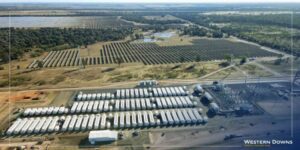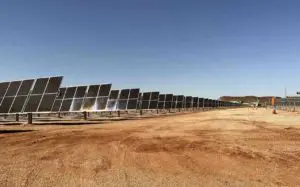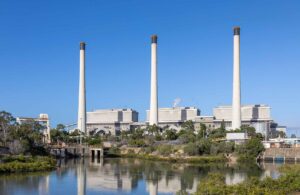The huge potential of Australia’s renewable energy sector to create jobs and economic growth would remain largely untapped under the nation’s two major parties, a new report has found, and could even decline further if Malcolm Turnbull’s Coalition is re-elected in the July federal election.
The report, Nice work if you can get it, published on Monday by The Australia Institute, estimates how many renewable energy jobs would be generated under the Coalition, Labor or the Greens, based on the three parties’ Renewable Energy Targets and published estimates of how many jobs are created with each MW of wind and solar built – indicated in the chart below.

“If you had to pick two words to describe the renewable energy sector globally, ‘jobs’ and ‘growth’ would fit the bill,” said former Pacific Hydro chief and report co-author Lane Crockett, in direct reference to the Coalition’s favoured election slogan.
But as the report goes on to note – and the chart below illustrates – the party’s RET of just 23 per cent by 2020 and no target articulated beyond that date, would contribute nothing of the sort for renewables in Australia.

“We estimate that under the Coalition’s current policy renewable jobs would never again reach their 2012 peak,” the report says, predicting “some employment growth” out to 2020 followed by a decline as construction ends and employment is largely restricted to operational jobs.
Indeed, the report notes that since 2012, Australia has managed to lose 5,000 renewable jobs, or 27 per cent of the sector’s workforce – a decline it says is “almost certainly” due to the uncertainty created by the Abbott government.
The report also criticises Turnbull’s latest policy decision, to divert $1 billion from the Clean Energy Finance Corporation to a new 10 year ‘Reef Fund’, as “not likely to impact how much renewable energy will be produced in Australia, nor how many people will be employed in renewables.
“Efforts to help protect the Great Barrier Reef from pollution are welcome, but they should not be at the expense of investment in renewable energy that help address the Reef’s battle with climate change,” the report says.
The Greens, meanwhile, offer the best prospects for renewables jobs, with the party’s RET policy of of 90 per cent by 2030 projected to resume growth seen at the start of the decade, increasing from the current 14,020 to just over 30,000 by 2020, according to the report. Construction would then slow, with another 5,000 jobs being added over the following decade.
Labor’s policy of 50 per cent renewables by 2030 follows a similar trend to the Greens, says TAI, but at a far lower level, with employment rising to 2020, and then slow growth out to their 2030 target, reaching just over 20,000.
“If Australia’s major political parties want to generate economic growth, then renewable energy is a perfect policy,” says the report. “It will lead to jobs and wider economic benefits and at the same time has significant local environmental outcomes as well as making a major cut in our climate footprint.
“The importance of policy support for renewables cannot be understated,” the report adds. “The absence of policy support for the last three years has seen Australia move in the opposite direction to the rest of the world.”







